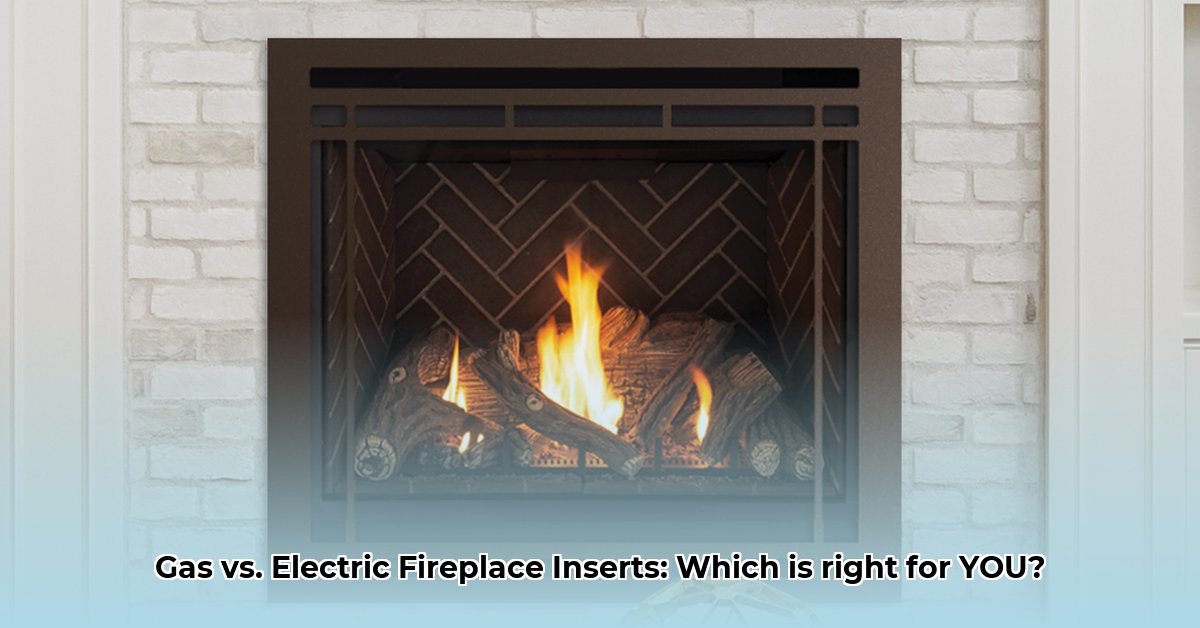
Heating your home shouldn't be a headache. A fireplace insert from Tractor Supply offers warmth and ambiance, but choosing between ventless gas and electric models requires careful consideration. This guide simplifies the process, comparing features, costs, and safety aspects to help you find the perfect fit.
Heat Output and Efficiency: Balancing Warmth and Wallet
Gas and electric fireplace inserts differ significantly in heat output and efficiency. Ventless gas inserts often boast higher BTU (British Thermal Units – a measure of heat energy) ratings, delivering rapid and intense heat, ideal for larger spaces. However, fluctuating natural gas prices influence running costs. Electric inserts typically offer lower BTU output, providing a gentler, more gradual warming. Their operating costs are generally more predictable and potentially lower, depending on your electricity rates. Which is more efficient for you? That depends on your location's energy prices and your heating needs.
| Feature | Ventless Gas Fireplace | Electric Fireplace |
|---|---|---|
| Heat Output | Higher BTU, faster heating | Lower BTU, gentler heating |
| Running Costs | Variable, depends on gas prices | Predictable, based on electricity rates |
| Energy Efficiency | Varies by model; some are highly efficient | Generally high, especially newer models |
Installation and Maintenance: DIY or Professional Help?
Installation complexity differs greatly. Ventless gas inserts usually require professional installation for safe gas line connection and to prevent carbon monoxide leaks. Ongoing maintenance includes occasional burner cleaning and annual inspections by a qualified technician. Electric inserts are often simpler to install, many being plug-and-play; however, checking your electrical system is always advised. Maintenance typically involves only cleaning.
Safety Considerations: Protecting Your Home and Family
Both types present potential hazards. Ventless gas inserts, if improperly installed or ventilated, risk carbon monoxide poisoning. Installing carbon monoxide detectors is vital. Electric inserts pose a lower risk but always use grounded outlets and consider GFCI (Ground Fault Circuit Interrupter) outlets for enhanced safety. Never overload circuits. Prioritizing safety ensures peace of mind.
Aesthetics and Features: Choosing Your Style
Personal preference plays a key role here. Gas inserts offer the mesmerizing dance of real flames. Electric inserts often provide a clean, modern aesthetic, and many now mimic real flames convincingly. Some electric models integrate with smart home systems, allowing remote control and scheduling. Tractor Supply offers various styles to complement any décor. What ambiance best suits your home?
Choosing the Right Insert: A Step-by-Step Decision Guide
Selecting the ideal fireplace insert involves several factors:
- Budget: Consider initial costs and ongoing running expenses.
- Heating Needs: Assess your space's size and heating requirements. Larger spaces often benefit from higher BTU gas inserts.
- Installation: Decide between DIY or professional installation (essential for gas inserts).
- Maintenance: Factor in time and cost of regular cleaning and inspections.
- Safety: Prioritize safety features and preventative measures.
- Aesthetics: Choose a style that enhances your home's décor.
This structured approach ensures a well-informed decision.
Tractor Supply's Fireplace Insert Selection
Tractor Supply offers a range of ventless gas and electric fireplace inserts. Check their website (https://www.tractorsupply.com/) for current models, customer reviews, and availability, which may vary by location. Remember to consult local building codes before installation. Don't hesitate to seek advice from Tractor Supply associates.
Key Considerations: Ventless Gas vs. Electric
- Initial Cost: Gas inserts typically have higher upfront costs.
- Running Cost: Electricity costs are generally more predictable than natural gas.
- Installation: Gas inserts almost always require professional installation.
- Maintenance: Electric inserts require less maintenance.
- Heat Output: Gas inserts usually deliver more intense heat.
- Safety: Both require safety precautions; carbon monoxide detectors are essential for gas inserts.
- Aesthetics: Choose the flame effect that best suits your taste.
This comparison helps clarify the key differences.